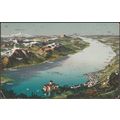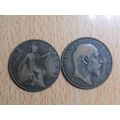Reynolds, Joshua - Lady Caroline Scott - Medici art postcard
- Condition : Used
- Dispatch : 2 Days
- Brand : None
- ID# : 74061433
- Quantity : 1 item
- Views : 1149
- Location : United Kingdom

- Seller : justthebook (+1704)
- Barcode : None
- Start : Sun 02 Sep 2012 19:50:50 (EDT)
- Close : Run Until Sold
- Remain : Run Until Sold
Checks/Cheques
 for 1 item(s) edit
for 1 item(s) edit
Shipping Calculator
More Listings from This Seller view all
Seller's Description
- Art Postcard
- Work of art title: Lady Caroline Scott
- Artist (if known): Sir Joshua Reynolds (1723-1792)
- Media or other details: painting
- Publisher / Gallery: Medici Society, London / Duke of Buccleuch Collection
- Postally used: no
- Stamp & postmark details (if relevant): na
- Size: modern
- Notes & condition details:
NOTES:
Size: 'Modern' is usually around 6in x 4in / 'Old Standard' is usually around 5 1/2in x 3 1/2in. Larger sizes mentioned, but if you need to know the exact size please ask.
All postcards are not totally new and are pre-owned. It's inevitable that older cards may show signs of ageing and use, particularly sent through the post. Any faults other than normal ageing are noted.
Stock No.: A355
------------------------------------------------
Postage & Packing:
UK (incl. IOM, CI & BFPO): 99p
Europe: GBP 1.60
Rest of world (inc. USA etc): GBP 2.75
No additional charges for more than one postcard. You can buy as many postcards from me as you like and you will just pay the fee above once. (If buying postcards with other things such as books, please contact or wait for invoice before paying).
Payment Methods:
UK - PayPal, Cheque (from UK bank) or postal order
Outside UK: PayPal only please (unless otherwise indicated). NO non-UK currency checks or money orders (sorry).
NOTE: All postcards are sent in brand new stiffened envelopes which I have bought for the task. These are specially made to protect postcards and you may be able to re-use them. In addition there are other costs to sending so the above charge is not just for the stamp!
----------------------------------------------
Text from the free encyclopedia WIKIPEDIA may appear below to give a little background information:
*************
Sir Joshua Reynolds RA FRS FRSA (16 July 1723 � 23 February 1792) was an influential 18th-century English painter, specialising in portraits and promoting the ""Grand Style"" in painting which depended on idealization of the imperfect. He was one of the founders and first President of the Royal Academy. King George III appreciated his merits and knighted him in 1769.
Having shown an early interest in art, Reynolds was apprenticed in 1740 to the fashionable London portrait painter Thomas Hudson, who had also been born in Devon.[2] Hudson had a collection of old master drawings, including some by Guercino, of which Reynolds made copies.[2] Although apprenticed to Hudson for four years, Reynolds only remained with him until the summer of 1743.[2] Having left Hudson, Reynolds worked for some time as a portrait-painter in Plymouth Dock (now Devonport). He returned to London before the end of 1744, but following his father's death in late 1745 he shared a house in Plymouth Dock with his sisters.[2]
In 1749, Reynolds met Commodore Augustus Keppel, who invited him to join HMS Centurion, of which he had command, on a voyage to the Mediterranean. With the ship he visited Lisbon, Cadiz, Algiers and Minorca. From Minorca he travelled to Livorno in Italy, and then on to Rome,.[3] where he spent two years,[4] studying the Old Masters and acquiring a taste for the ""Grand Style"".[citation needed] Lord Edgecumbe, who had known Reynolds as a boy and introduced him to Keppel, suggested that he should study with Pompeo Batoni, the leading painter in Rome at the time, but Reynolds replied that he had nothing to learn from him.[2] While in Rome he suffered a severe cold, which left him partially deaf, and, as a result, he began to carry a small ear trumpet with which he is often pictured
Reynolds travelled homewards overland via Florence, Bologna, Venice[5] and Paris.[6] He was accompanied by Giuseppe Marchi, then aged about seventeen.[7] Apart from a brief interlude in 1770, Marchi was to remain in Reynolds' employment as a studio assistant for the rest of the artist's career.[7] Following his arrival in England in October 1752 , Reynolds spent three months in Devon,[8] before establishing himself in London, where he would remain for the rest of his life. He took rooms in St Martin's Lane, before moving to Great Newport Street, his sister Frances acting as his housekeeper.,[9] He achieved success rapidly, and was extremely prolific.[10] Lord Edgecumbe recommended the Duke of Devonshire and Duke of Grafton to sit for him, and other peers soon followed, including the Duke of Cumberland, third son of George II, [11] in whose portrait, according to Nicholas Penny ""bulk is brilliantly converted into power"".[11] In 1760 Reynolds moved into a large house, with space to show his works and accommodate his assistants, on the west side of Leicester Fields (now Leicester Square). [12]
Along with his ambitious full-length portraits, Reynolds painted large numbers of smaller works. In the late 1750s, at the height of the social season, he was receiving five or six sitters a day, each for an hour at a time. [11] By 1761 Reynolds could command a fee of 80 guineas for a full-length portrait; in 1764 he was paid 100 guineas for a portrait of Lord Burghersh.[13]
The clothing of the sitters in Reynolds' portraits was usually painted either by one his pupils,[14] his studio assistant Giuseppe Marchi,[15] or the specialist drapery painter Peter Toms[14] James Northcote, his pupil, wrote of this arrangement that ""the imitation of particular stuffs is not the work of genius, but is to be acquired easily by practice, and this was what his pupils could do by care and time more than he himself chose to bestow; but his own slight and masterly work was still the best.""[14] Lay figures were used to model the clothes.[11]
Reynolds often adapted the poses of his subjects from the works of earlier artists, a practice mocked by Nathaniel Hone in a painting called The Conjuror submitted to the Royal Academy exhibition of 1775, and now in the collection of the National Gallery of Ireland. It shows a figure representing, though not resembling, Reynolds, seated in front of a cascade of prints from which Reynolds had borrowed with varying degrees of subtlety.[16]>
Although not principally known for his landscapes, Reynolds did paint in this genre. He had an excellent vantage from his house on Richmond Hill, and painted the view in about 1780.[
type=printed postcards
theme=artists signed
sub-theme=art
number of items=single
period=1945 - present
postage condition=unposted
Listing Information
| Listing Type | Gallery Listing |
| Listing ID# | 74061433 |
| Start Time | Sun 02 Sep 2012 19:50:50 (EDT) |
| Close Time | Run Until Sold |
| Starting Bid | Fixed Price (no bidding) |
| Item Condition | Used |
| Bids | 0 |
| Views | 1149 |
| Dispatch Time | 2 Days |
| Quantity | 1 |
| Location | United Kingdom |
| Auto Extend | No |



















